A few months ago, I was talking with the artist formerly known as Lysa Thatcher. We were chatting about two movies she made in quick succession – Little Darlins (1980) and Oh Those Nurses! (1982).
The enigma in question was the identity of the movies’ director/cameraman, a mystery figure called C.C. Williams.
He had a few credits, variously as a director, cinematographer, production manager, writer, and sundry crew member, but Lysa couldn’t remember any other details about him. I said I’d look into his career – and see if I could track him down to hear about his memories.
What I found was much more than I expected: an entertaining life story including adult films, award-winning children’s TV shows, the history of the Chippendales, murder, the New York mob, Kandi Barbour, mainstream films, and assorted Emmys, Oscars, and other prizes.
This is the story of C.C. Williams.
—————————————————————————————————————-
1. C.C. Williams – Beginnings
Do you remember your first experience of film?
My earliest memory is watching the ‘wrong’ screen at a drive-in theater!
I was raised in rural Massachusetts, my family was very poor, and we usually went to drive-in theaters because a whole carful of people paid the same as a single admission in a regular theater.
What was the film you saw that day?
Who knows…? I just know it was in French, black-and-white, and my mom was very upset that I saw it instead of whatever Disney film was on the ‘right’ screen.
You were born in 1949 – so what television did you see as you were growing up?
I still remember being shocked at the first sight of a television. My grandmother was the first in the neighborhood to get one, but it only displayed talking heads on it so I quickly lost interest. Then she told me to come back on Saturday, which I did, and that was when I was overwhelmed by the kids’ programming: ‘Howdy Doody’ (1947-60), ‘Sky King’ (1951-62), and most especially, ‘The Lone Ranger’ (1949-57).
From then on, the moving image fascinated me.
How did you decide to have a career in film when you graduated high school?
It was a total accident: I was facing the Vietnam draft and I was hitchhiking, when I got picked up by a friend’s father. He turned me on to the Rhode Island School of Design (RISD), so I applied and got accepted.
I was completely unaware of how prestigious the institution was. For me, it was simply a place to go and not get killed.
What was the experience like?
Good. I quickly got into still photography, then even more quickly, I got into film. I became RISD’s first Film major.
Did that lead directly to film work?
Almost immediately. In my sophomore year, I began working professionally in film. I shot several documentaries, one of which won several awards, and I shot short films, one of which earned me a cinematography award.
So it was this experience that made you opt for a career in film?
Yes. In fact, I got employed by PBS before completing college. I was hired to work on the mathematics version of ‘Sesame Street.’ I can’t remember the name of the show.
What was that like?
Mixed. Several of the shows I worked on won Emmys, but they were given to a Director and Producer that I never met nor even spoke to. That was my first sour experience in the business. I stopped working for PBS and moved to New York. This would be the early to mid-1970s.
How difficult was it to find film work in New York at that time?
Virtually impossible. That was when I ran into the ‘union system’ for the first time.
And how difficult was it to join a union?
NABET offered me union status free of charge at one point, just before they joined with IATSE. The first job that IATSE wanted me to do was to join a picket line against ‘Kojak’ (1973-78). Whatever… I refused.
*
2. Adult Films – Part 1: Carter Stevens… and ‘Unicorn Tales’
Selected Filmography:
Rollerbabies (1976) (directed by Carter Stevens)
Teenage Twins (1976) (directed by Carter Stevens)
Jail Bait (1977) (directed by Carter Stevens)
Punk Rock (1977) (directed by Carter Stevens)
Captain Lust (1977) (directed by Beau Buchanan)
Honeymoon Haven (1977) (directed by Carter Stevens)
The Love Couch (1978) (directed by Carter Stevens)
Double Your Pleasure (1978) (directed by Carter Stevens)
Pleasure Palace (1979) (directed by Carter Stevens)
Was the work that you found in adult films attractive to you because there were no unions?
That’s right. The adult world was un-unionized and really hopping. I jumped right in and went through the usual progression: Personal Assistant, Production Manager, 2nd Electric, Gaffer, Assistant Camera, Camera Operator, then Director of Photography… all within a year-and-a-half.
Who did you work for first in the adult business?
Carter Stevens, who I always knew as Mal Worob.
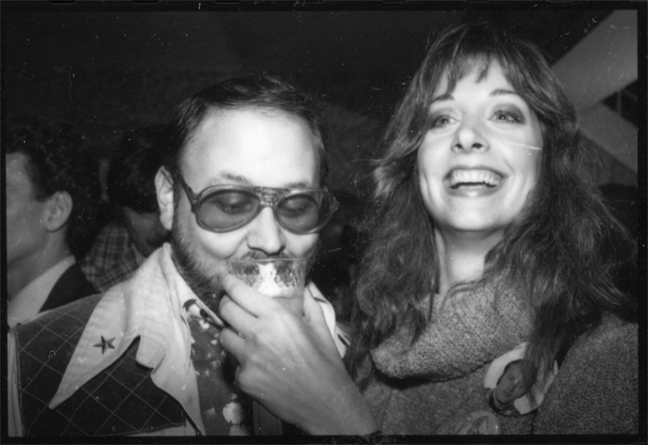 Carter Stevens (with Dian Hanson)
Carter Stevens (with Dian Hanson)
How did you meet Mal?
I met Mal/Carter by answering an ad in ‘Back Stage’ for a P.A. ‘Back Stage’ had lots of ads for jobs, and it was read constantly by a girlfriend of mine who was an aspiring Broadway performer (she actually made it!).
What was your reaction to the fact that Mal made sex films?
I was definitely startled but we both adjusted. He had this really fantastic loft space on 23rd St on the West Side. It had a freight elevator which I truly began to appreciate when we went into production. We became friends in addition to him being my first mentor in the business.
What was Mal looking for in a PA?
He gave me more responsibility than any PA should have had right away: I was handling paperwork, cash, and payouts on our first shoot.
I had been working with 16mm up till then, so Mal provided the great opportunity to work with 35mm. In return for me accepting a bottom-of-the-barrel salary, he taught me loading, assistant camera work, camera operating, and even editing on an upright Moviola.
At first, he was definitely startled by my background – I don’t think he’d met many college types who were also experienced filmmakers that were applying to be PAs – but each of us were really pleased with the other.
Do you remember what film you worked on first with Mal?
We shot a number of loops first, and by the third one I’d gotten a raise and was operating camera more than half the time. On our first feature film together, Mal hired the ‘legit’ DP that he usually worked with – so that was my opportunity to learn everything I could about electrics and lighting. On our next loop, he had me do the lighting.
I think we did three features back-to-back-to-back in two weeks.
It was a good part of your film-making education then?
The thing that was wonderful was that all the production elements of making adult films were identical to those involved in making ‘legit’ films – virtually all of the lighting and camera equipment and the stages of production were the same in both genres.
Sadly that’s not the case anymore as cheap video or expensive CG ruined all that.
Did you work solely for Mal in the adult film field in those early days?
Sometime in that first year, Mal was hired as Production Manager on Captain Lust (1977) by Beau Buchanan.
Mal employed me as Assistant Production Manager and Second Camera Operator on that movie.
That was a legendary shoot.
It was the biggest hoot of my adult film life! We actually sailed and shot on several tall ships. We even sailed one down to Atlantic City, where we had a full-on broadside battle with a replica of Christopher Columbus’ ‘Santa Maria’! The son of the guy who did special effects for ‘The Exorcist’ (1973) did all our effects.
One of the funniest moments was when Bobby Astyr became impatient drawing the treasure map on his genitals. The whole ship was cracking up at that.
What was your impression of how that film turned out?
I don’t know: other than a few scenes that Beau invited me to watch on his Moviola, I never did see ‘Captain Lust’.
The ‘Captain Lust’ transfer that you sent me is abominable. I still remember the rushes and one screening of dailies we had, and the original footage had a golden hue with saturated colors and decent contrast, not at all like what I just saw.
What was Beau like to work with?
Beau and I only worked together once, but we were friendly and I really enjoyed his company. I didn’t remember he was a featured character in ‘Captain Lust’ until you reminded me: what a ham!
He was one of the great eccentrics in the business. He thought the experience of making a project was just as important as the profit that he and his investors got out of it in the end. That might have been his eventual undoing. I never met anyone else like him in the adult world until I met David Buckley.
During this time, did you do any mainstream film work?
After I became Mal’s Production Manager, a new PA, Matia Karrell, was brought in by Mal’s girlfriend. I trained Matia as a PA, then as a Second Electric, and then as a Gaffer, but she didn’t last long as the adult world was a little too male-centric for her taste, so she moved on.
The project she moved onto was Unicorn Tales (1977-78). ‘Unicorn Tales’ was a series shot in New York consisting of a number of musical short films for kids, each one being a modern version of a classic fairy tale.
‘Unicorn Tales’ went on to be successful and to win awards – but at this time the production was in serious trouble. They were in the process of firing a producer, Bill Milling, and badly needed a Line Producer to repair the damage and get the production back on track. The PA that I’d trained for Mal’s productions recommended me for the job.
That was how I met Nick De Noia who eventually changed my life.
Who was Nick De Noia?
Nick was basically a showman – a gay producer, director, writer, musician, choreographer. He created and directed ‘Unicorn Tales’, and I was the cinematographer and production manager for the show.
What was Nick like to work with?
Manic, creative, energetic… He had trouble controlling the ideas that he kept having. He would have an idea like, “We need to have 50 dancers illegally on a sidewalk in front of Rockefeller Center” and so we had to change everything, all the plans, all the schedules, because of that moment in his head. We always found some way to make it happen. Every time you thought, “No way we’re gonna be able to get this done” but every time we did it. He was the best artist I’ve ever known.
And the show won awards…
Yes, it got twelve Emmy nominations and won three!
I remember Bill Milling – whose firing is what got me the producing job on ‘Unicorn Tales’ – showed up at the Emmy Awards. He took the award saying he would “keep your Emmy warm for you” even though the award was for the show that I produced! Nick was furious about that.
Much later, I did some cinematography work for Bill. He’d became a specialist in sensationalized documentaries, and I remember shooting the Dead Kennedys for him in San Francisco.
In addition to doing the production and writing on ‘Unicorn Tales’, Nick encourages you to branch out and become a writer too?
I basically owe my entire writing career to Nick De Noia. When I was Line Producing our first project on ‘Unicorn Tales’, I told Nick that I didn’t like the ending. He told me to fix it, so I did. He was so impressed he used me as a re-writer and polisher from then on – uncredited, of course, to avoid legal and union issues.
Later on, he offered me a job as a writer at Hanna-Barbera, which I refused… I didn’t see myself writing cartoons.
My work on ‘Unicorn Tales’ led to other writing work: one of our Production Assistants, Richard Wenk, made Dracula Bites The Big Apple (1979) which I helped produce, write, and shoot. That won AFI’s Best Short Film award.
Sounds like a busy life: the wild world of adult films, and the craziness of Nick De Noia and ‘Unicorn Tales’?
Yes – and then I met the Buckleys…
*
3. Adult Films – Part 2: The Buckleys
Selected Filmography:
Young, Wild and Wonderful (1980) (directed by David Buckley as ‘Jim Clark’)
Little Darlin’s (1981) (directed by David Buckley as ‘Jim Clark’)
Debbie Does Dallas Part II (1981) (directed by David Buckley as ‘Jim Clarke’)
Angel Buns (1982) (directed by David Buckley as ‘David MacKenzie’)
Oh Those Nurses! (1982) (directed by C.C. Williams)
Daddy’s Little Girls (1983) (directed by Chris Covino as ‘John Christopher’)
There were three Buckley brothers in the film business: which did you know?
It started with David who approached me in a bar that I was frequenting at the time. Apparently, he knew someone that had pointed me out. We spent the rest of that night until 4am the following morning cruising around, going to hot spots and after-hours joints that I’d never heard of. At some point he asked if I’d be interested in DP-ing for him. I told him I wasn’t really a DP – at least, not yet. He said he didn’t care.
I forgot about that conversation until a month later when he asked me to shoot a feature for him, offering me a bribe to do it: I could pick any camera I wanted to use.
I said, “Panavision,” and he delivered, introducing me to the General Camera store in midtown. You need to understand that NOBODY shot adult films with Panavision: it was its own, exclusive, high-end system, completely out of the league for any adult filmmakers – except for David Buckley, for some reason.
My visit to General Camera with David was the first time I met his brother Jim: Jim was Producer or Co-Producer on all of the films I did with David, even though he was rarely on set. David made all the films, even though they have been credited to Jim.
Do you remember what movie you worked on first?
David and I got together right after he made Debbie Does Dallas (1978), and one of the films he really wanted me to shoot was a sequel to that. The problem was that ‘The Boys’ – Mickey Zaffarano and his crew – just weren’t willing to go through more of the same legal hassles in a hurry.
The other problem was that we couldn’t penetrate the mental/drug haze that Bambi Woods, the star of ‘Debbie Does Dallas,’ seemed to be in constantly. She was one of the sad cases I met in the biz, a very unhappy girl. Linda Lovelace was the other. Most of the rest of the women actually seemed content and self-assured but not arrogant – unlike many of the legit acting ladies I met later.
What do you remember about the films you shot with David Buckley?
I can’t remember the titles of the first films we did together. My focus – pardon the pun – was entirely on the equipment and executing with it to make the best image possible.
I do remember working on Angel Buns (1982) for the simple reason that I became only the second registered operator of the Panaglide – a system later bought by Steadicam because it was better – by training with it on that film.
Another one I remember is Little Darlin’s (1981). The working title for it had been ‘Eager Beavers.’ If you listen to the end credits theme song for ‘Little Darlins,’ it’s actually written for ‘Eager Beavers’ – ‘We’re So Eager.’ I remember that the girls in the film were running around in private school uniforms.
But the main reason I remember the film is because I got to shoot it with the first Golden Panaflex in New York: this was their latest top-of-the-line camera, which was a step above their already-best-in-the-world cameras! I wish there were better copies of these films: they was shot on Panavision 1:85 for God’s sake!
Do you remember any of the actors on ‘Little Darlins’?
I’m vaguely remembering that ‘Little Darlins’ was one of Buckley’s crossover attempts, and that he hired half a dozen legit actresses on it.
One of the stars was Jake Teague who played a perverted professor or something like that. He did this astounding scene with some 20-year-old who looked 14.
That would be Juliet Jay. She’d already been in the industry for several years.
It was amazingly creepy yet hilarious! As far as I remember, she was a Jim Buckley discovery.
When I looked at the copy of ‘Little Darlins’ that you sent me… after seeing the transfer, color de-saturation, and contrast loss, the young actress doesn’t look anywhere near as young as she did in person or the dailies.
Let’s talk about the other performers you remember.
Among my favorites were Eric Edwards, Jamie Gillis, and Jake Teague. Jake was a literal joy to work with, very inventive.
R. Bolla/Bob Kerman was another solid actor. We kept running into each other in weird places outside of New York during his ‘Cannibal Holocaust’ (1980) days. We both thought that ‘Cannibal’ was going to make him a proper legit actor – but it came and went, and he continued in adult features. He was so great to work with.
Veronica Hart, Annette Haven, and Sharon Mitchell were always reliable and delivered too, but I made it a habit to keep my distance from the females so I only got to know a few of them very well.
In the early 1980s, your film work was all with David Buckley?
Yes, and David Buckley was the biggest influence on me and my work. He always had an eye toward getting better and more ‘legit’. He was always willing to devote a little more time and money to getting a scene shot or written ‘just right.’ His aspirations helped me improve as both a technician and an artist.
The standard of adult films had increased dramatically in just a few years.
Honestly, the adult film work was far more challenging than any of the ‘legit’ jobs that I had.
I never had a really bad experience in the adult film world, while good experiences in the legit film world have been few and far between. I think the reason is that there’s almost no choice except to be honest in adult films, while there’s almost no choice but to be deceptive in mainstream films. Kinda sad.
Virtually all of my recollections of that time are positive. For me, it was a great, vibrant time in New York.
And you were getting more mainstream gigs too.
I had a great relationship with General Camera, the Panavision rep in NYC, so I became the second registered Panaglide Operator which led to ‘legit’ work on the side: I worked on ‘The Warriors’ (1979), ‘Wolfen’ (1981), ‘Tootsie’ (1982), and others – all without credit because of my non-union status.
How did your working relationship with the Buckleys come to an end?
Our last film together was called ‘Thundershine.’
For David, this film was to be his biggest deal. He actually had me meet and pitch ‘The Boys’ – Mickey Zaffarano and his friends again – to convince them we could pull it off. It was meant to be a combined adult/legit feature film, which meant shooting the legit scenes with a mixed cast, and the adult scenes with adult performers.
We went up to the Poconos to film it. David even convinced Bambi Woods to make her comeback in it, but she was so drug-addled at the time that we didn’t get a complete scene with her in it.
Amongst the legit people, two of the leads in ‘Thundershine,’ Perry Ross (whose real name was Perry Rosen) and Jason Graves became two of my best friends.
I understand it was a troubled production…
It was a rough time for David. First, he’d fallen in love with a woman named Carla. I think he was bisexual but I only witnessed his attraction toward women. He was pretty much incapable of doing any work until he managed to get Carla up to the shooting location… which gave me a ton of new responsibilities. I had to write and direct new legit scenes to help string together the adult material into the feature.
In addition, David was experiencing the dark side of cocaine. At one point, with the film over-schedule and over-budget, he ran off to NYC to have a conference with ‘The Boys’ so he could re-negotiate everybody’s deals. He disappeared for a few days, during which our stunt coordinator set a new world’s record for a car jump (!) and our legit actors finished all their scenes.
Upon his return, David met with me, Jim (who’d unexpectedly appeared), my gaffer, the AC, and the soundman, and he declared “I did it! Let’s celebrate!” He then whipped out a rock of cocaine the size of a baseball.
Meaning he’d secured funding to finish the film?
Yes. The problem was that most of the legit cast left the following day. And a day later, the production shut down. David and Jim did renegotiate the deals of myself and two of my best friends at the time, but after we came through for them, the Buckleys welched.
I never spoke to Jim again. I only spoke with David once to tell him I would never work with him again so he should stop calling me.
Was the film ever released?
No, to my knowledge, ‘Thundershine,’ was never released in any form. David’s addiction problem overwhelmed us.
Did you ever run into David again after that?
Twenty years later, a friend of mine was shooting in NYC and rented a location that turned out to be David’s. Somehow my name came up and David asked her if he could have my current information because he wanted to talk to me. I told her, “Absolutely not.”
That was the end of the Buckley saga, a bizarre combination of some of the best and worst experiences I had in the adult business. I have to admit I never had regrets about the work we did.
*
4. Chippendales
When one door closes, another opens… so what happened next?
I got a call from my friend Nick De Noia, the guy I’d met and become friends with when I worked for him on ‘Unicorn Tales.’
He was now in Los Angeles and he said, “You gotta come out here to work on this thing with me. I’m obsessed with it.” But he wouldn’t tell me what “it” even was. He knew he had to sort of create a mystery for me to come out, so he sent me a round-trip ticket, and promised me that I wouldn’t believe what I was going to see.
When I landed at the airport, there was a limo there, and they took me to the back door of this nightclub.
Nick was there waiting on the back steps of Chippendales.
What did you know about Chippendales?
Nothing. It was just a small-scale club.
Chippendales had been founded by India-born Somen ‘Steve’ Banerjee. In 1975, Banerjee had bought a failing West Los Angeles bar named Destiny II before renaming it ‘Chippendales’ in 1979, whereupon he began hosting exotic dance nights for women.
What did Nick show you when you got there?
I went into this place, and it was totally dark. And then all of a sudden, the lights came up and a guy came out dressed as a cowboy. And he kind of galumphed a couple times on the stage and then started stripping. I mean, that was about it. And the women in this place – which now was lit – went crazy.
Nick was staring at me. And he could see I wasn’t getting it, so he took me by the sleeve and dragged me out back and he said, “This is not what we’re going to do. We’re gonna make this work. We need concepts, storylines, characters, an environment where you’re not sure what’s going to happen next.”
The next day, I went with Nick to Steve Banerjee’s office to lay out a vision for Chippendales.
Nick and Steve were polar opposites. Steve was a quieter, insecure, and self-conscious guy with few confidants, preferring to do business in the shadows one-on-one. Nick was an intense, fast-talking theater guy from New York City, who loved attention and knew how to command a room. Despite their marked differences, Steve wanted mainstream success, and Nick knew he could turn Chippendales into a true theatrical experience.
What were your impressions of Banerjee?
Didn’t like him. At all.
Basically, Nick walked in and convinced Banerjee to let him take over the show. He said, “I’ll put you on the map. I will make this place internationally famous if you will let me choreograph and direct a new show. Your show is terrible, and I want to put in a great show. We’re talking about mythology, we’re trying to build mythology.”
And what was your role in the transformation of Chippendales?
Nick and I were literally partners on the creative end of Chippendales. I wrote everything that became the stage show, and Nick directed it. We both came up with various character ideas and imagery, but Nick was the showman and choreographer.
He was just brilliant. His passion was to do these big, bizarre crossover musical dramas, like Moulin Rouge. I think he would’ve ruined Baz Luhrmann’s career!
How successful did Nick’s vision and your collaboration prove to be?
When we started, an average night in L.A. was one show with 200 customers. But the day after our show premiered, there was a bit of riot as 1,500 people fought to get in. It was covered by all the local news. After that, three sold-out shows each night was common, with lines around the block. When we premiered the NY show, it sold out a year in advance if I remember right. We won the Obies for attendance for two years running. In the opening week there, I was Brooke Shields’ escort while she and her mom and their entourage enjoyed the show!
How did you react to all the success?
I was uncomfortable. I’d been getting a lot of legit work as both a writer and a cinematographer and I considered Chippendales a kind of burlesque side show compared to my chosen career.
But Nick forced me to consider it seriously: he had a deal in place with Harrah’s to create a new, exclusive ‘All-Male Revue’ for their clubs, starting in Tahoe. He made me a three-year offer that I had to accept.
The next day he was killed.
In 1987, Nick de Noia was killed by a hit-man hired by his partner Steve Banerjee.
How did you find out about the killing?
The following morning, there were cops in my driveway and in the street below my Venice apartment. Right after I saw them, I got the call from NYC saying Nick was murdered.
Nick’s brothers felt the deal I had cut with Nick was what got him killed and me targeted. The FBI said we were supposed to be killed at the same time, but apparently the idiot who was supposed to kill me had no comprehension of time zones.
What effect did Nick’s death have on you?
Nick was originally my mentor, then my partner, but at the time of his death he was my best friend. Not a day goes by that he doesn’t come up in my mind one way or another. He is absolutely irreplaceable as a talent and as a friend.
Was that the end of your association with Chippendales?
Emotionally, my involvement with Chippendales ended then, but I had a year of pain ahead with the funeral and the family. I was close to Nick’s mom and pop, but no one else in the family. I decided to give up all my rights in the Chippendales to them so they’d be taken care of.
Banerjee was arrested in 1993 for murder for hire, racketeering, and attempted arson, for which he was sentenced to 26 years on a plea bargain. He hanged himself in his cell a year later.
Were you called to testify against Banerjee?
One of the most valuable times in my life was testifying against Banerjee to a Grand Jury, quickly followed by the satisfaction of having him plead guilty. I had no idea, and didn’t find out till 20 years later, that the brothers were negotiating some kind of deal with Banerjee, who I knew had killed Nick.
I was also pleased when I stopped sharing air with him.
*
5. The Los Angeles Years… and Kandi Barbour
Did you stay in touch with your old film friends back East after you moved to Los Angeles?
I stayed friendly with Mal/Carter the entire time I had a place in NY, but soon the ‘legit’ jobs and the opportunities offered by the Buckleys simply created a distance between us. Mal also got into darker subject matter with which I was uncomfortable. My move to the West Coast and the huge success of Chippendales is what finally kept us apart. I never lost my appreciation and fondness for him though.
Another person I stayed in touch with was Genie Joseph. I met Genie on the set of one of Mal’s films. Mal had a no-relationships-with-the-talent policy so things were casual at first. Then Genie wanted to get behind the scenes and work as a PA, and later as a writer, so we got to know each other better. It was when I was bouncing back and forth between the coasts that we had our relationship. We maintained it as friends to this day, checking out each other’s work and helping when we could. I worked as production manager on First Time at Cherry High (1984) and The T & A Team (1984).
Genie Joseph became, and remains, a close friend.
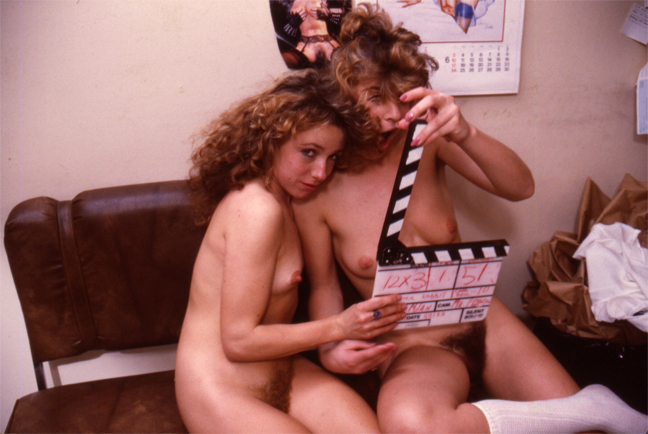 On the set of ‘First Time at Cherry High’ (1984)
On the set of ‘First Time at Cherry High’ (1984)
There were stories that adult film star, Kandi Barbour, was a girlfriend of yours. What do you remember about her?
She was a stunning-looking girl with a killer Southern accent. When we first met in New York, I had no idea she was in the business. She was with a girlfriend attending some kind of audition. We had a truly wild night and day at The Plaza, and then I found out she was not only in the biz, but she was cast in a film I was scheduled to shoot for David Buckley!
I’d broken my cardinal rule of not getting involved with female talent – but there was no undoing it at that point.
How did the shoot go?
We did manage to get through that shoot, but I accidentally caused a lot of damage – it turned out Kandi’s girlfriend’s audition was for the same film, and they both got roles!
Do you know who this girlfriend was?
Her buddy was this cute, short-haired blonde, very smart and confident, but not happy with the business. I think she lived on the West Coast and quit soon after I met her. I can’t remember her name or her stage name, and I don’t remember the picture I shot her and Kandi in.
I do remember David Buckley was absolutely furious with both of them: he was mad with Kandi because of all the problems she created, and mad with her friend because she was just too smart for what she was doing and she knew it. They both could have wound up on the cutting room floor, if I know Buckley.
What was Kandi’s reaction when she found you were shooting the film?
Kandi demanded I not shoot the film because she didn’t want me to see her, and especially her girlfriend, having sex! Never understood that second part. It led to what I thought was a complete blowout between us.
Did you see her again after that?
I thought we’d broken up – even though we were never actually together – but then she showed up at my apartment building in Los Angeles a week or two later! We had a couple more wild nights in L.A.
She’d rented a room at the Montecito and even though ‘Fatal Attraction’ hadn’t been made yet, she was already re-enacting that script… so I was wary of having her know personal details – like exactly where I lived, who my friends were, or what my schedule was. I almost had a heart attack when I saw ‘Fatal Attraction’ the first time. I decided I’d gotten away lucky.
What was she like as a person?
Kandi was incredibly naïve considering the business she was in. For example, her real, given name was Kandi Barbour, and it seemed nobody had told her about stage names. A month after we met, she got an abortion, telling me I was the father – except she was three months pregnant at the time!
She had this bizarre habit of leading guys on in public, loving it when they came on to her, and then telling them she was taken and that she was with me! She’d get furious when I’d tell them she wasn’t with me… and they could go for it. She was the weirdest combination of Southern sweet and sour I’ve ever met.
Did you ever actually live together?
It was the most bizarre relationship I’ve had… but no, we never did live together. She eventually gave up on me, calling me from Europe to let me know she’d lost her luggage and was having to go around naked. When I told her to take plenty of Vitamin C, she hung up on me. As far as I know, the only guy she ever actually lived with was Jamie Gillis.
The last I ever heard about her was that she was back in Dothen, Alabama, which I think was her hometown.
As strange and dangerous as she was, I still have a fondness for her. She was unique in my life, and I’m glad about that.
Did you hear about her passing a few years ago? She’d been homeless in San Francisco for a while.
Oh man, I hope you’re wrong about that. She was just really confused, didn’t have an evil bone in her body. In my mind, she only deserved the best, so I’ll keep thinking of her as having returned to her home town.
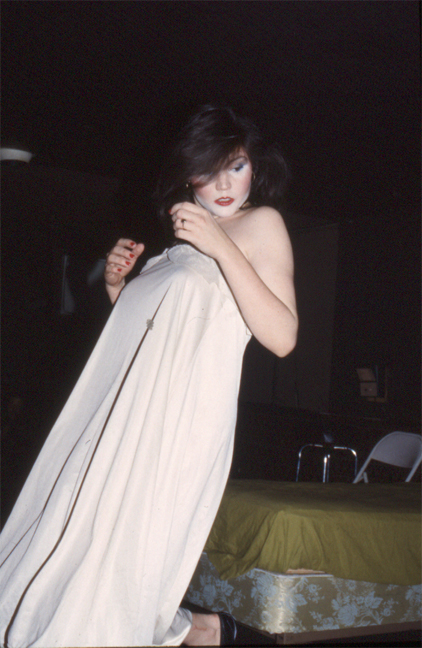 Kandi Barbour at Show World, early 1980s
Kandi Barbour at Show World, early 1980s
*
6. Adult Films – Part 3: The Perry Ross Years
Selected Filmography (all directed by C.C. Williams):
The Devil in Miss Dare (1986)
Pumping Irene (1986)
Hannah Does Her Sisters (1986)
Dirty Harriet (1986)
The Autobiography of Herman Flogger (1986)
Tales of the Uncensored (1987)
Trampire (1987)
The Load Warrior (1987)
Load Warrior II: The Second Coming (1987)
Pumping Irene II (1987)
In the mid 1980s, when you were still active with Chippendales, were you doing other work?
I got involved in a number of fitness projects because of Perry Ross, one of my best friends who I’d met as the male lead in ‘Thundershine,’ who was a real gym rat.
What was Perry doing at this point?
When he first came out to the West Coast, he worked as a trainer at a local gym and trained me. Through him I met and became friends with a lineman for the Kansas City Chiefs, Pete Koch, who I also worked out with a lot. Pete was in with Weider Enterprises and ESPN, and that’s how the first few jobs there came in and they became regular clients. Then Fred Hatfield and I hit it off and did a whole series of internal videos for Weider.
That led to promos for people like Arnold Schwarzenegger, Dr. Fred Hatfield who was World’s Strongest Man at the time, and Rich Gaspari who was a big shot in the Mr. Olympia competition.
Through those experiences, I had the idea for Muscle Motion (1983), the Chippendales exercise video, and I also brought Perry in to help produce a legit exercise video, The BodySculpture System (1986), that went Platinum.
At the same time, I was commuting to New York to set up the New York Chippendales Show with Nick.
How did you get back into making adult films?
It turned out I had a reputation in the adult business, probably because of Mickey Zaffarano. The word was that I delivered and what I worked on made money. So even though I’d been out for a while, Perry set up a meeting with AVC – I think Vidco was an offshoot of AVC – which was the big adult film conglomerate in the Valley at the time.
I remember guaranteeing whatever they financed would get completed – and so I made a film or two for them.
Which films stand out from this period?
One that I clearly remember was The Load Warrior (1987), which I shot on film. It featured Lois Ayres, Gail Force, and Angel Kelly. Then there was a sequel, and as far as I know, it was that success that led to everything else with Perry.
What did that entail?
Perry had run into some serious financial problems after he moved to the West Coast and got custody of his kids. He literally begged me for help establishing an adult film business – he had the financial contacts but had no idea how to create product.
What was Perry like as a person?
When I first met Perry, he was a recovered heroin addict. He didn’t hide it, excusing it as his rationale for controlling his overabundance of energy, which he had in spades. It was hard to believe since he was an ex-Marine, built like a bodybuilder, with this exuberant personality. I thought he was also a pretty talented actor. But when he showed up in L.A., he was truly depressed and desperate.
There was just no way Perry would ask me for money, so he asked for help instead, and I was glad to give it.
So you helped him set up his company?
Yes. That was Fantasy Pictures. I wrote, directed, and shot a series of features for him that were pretty successful. He was short on product so I created a series of films which were all done on video. I remember Perry used the concept that we’d used on the legit exercise video, ‘The BodySculpture System’, as the basis for Pumping Irene (1986).
Several of them featured Barbara Dare, who I think was under exclusive contract with him.
What was Barbara Dare like?
Barbara was one of the smartest, best-adjusted women I ever worked with, right up there with Veronica Hart.
Another Barbara Dare vehicle I shot was called ‘Mimi Vice’ but I don’t remember much about it. And she was in ‘Hannah Does Her Sisters’ (1986) too.
My favorite memories of her were when we did a spoof of ‘Lifestyles of the Rich & Famous’: she was a trooper on that shoot, did anything and everything to get it done. It might have been a softcore add-on to one of the features, I’m not sure, but I don’t remember shooting any hardcore with her on that.
Did you feel that the business had changed since the early days in New York now that you were shooting on video?
Yes, everything was now shoestring and haphazard, and there was no quality or content requirements whatsoever. I really hated it so much, so as soon as Perry was stabilized, I bailed out.
That was around the same time that Perry got married to the porn star, Angela Baron.
Yes, and Perry was a different guy after he met Angela. Unfortunately, I have to say I never liked her. When I first met her, Perry introduced her as “our next star” though he said she couldn’t speak English. But watching her, I could tell she understood every word being said. A month later, she could suddenly speak English, and was horrific to work with, clearly feeling she was above the business she had chosen to be in.
I’d already distanced myself from the business enough to be able to tell Perry I couldn’t work with her on her first starring feature, Trampire (1987), so I mentored somebody as a co-director: Paul Thomas, I think.
I still remember Randy West commiserating with me about how hard and frustrating what should have been an enjoyable and fun shoot had become.
Did you stay in touch with Perry after that?
Angela became his third (or fourth) wife at some point, and I began seeing less and less of him. He kept making me offers but I turned them down.
We spoke on the phone a few times, and every time he would say that he was “tired” and “getting old”. At some point, he went to Amsterdam to close a film deal. While he was there, he discovered heroin was legal, and gave himself the same dose he was doing when he was a user. It stopped his heart.
That must have been a shock.
I did go to the funeral, and was pleased to see how many showed up. Didn’t say a word to Angela, though.
Perry and Nick De Noia were the two most dynamic personalities I ever met. I thought they’d live forever. They should have.
Who do you remember from the adult industry in the mid 1980s?
I remember Paul Thomas, but primarily as an actor. I did mentor him at some point when he wanted to switch careers.
Eric Edwards was a very manly man without being some kind of asshole. He was one of the easiest and most reliable to work with.
Sharon Mitchell was someone I knew and respected. I also liked Randy West, Peter North, and Ron Jeremy. The entire time I knew Ron – when I ran into him in New York and Los Angeles – he was always upbeat and funny as hell. And in his defense, I have to say he was pestered constantly by women every time I saw him. I have to doubt he ever needed to force anybody.
I had a meeting with the Mitchells in San Francisco once when I was shooting a project with John Holmes and Annette Haven. I didn’t like them at all. They made me an offer, I refused.
But as for everyone else, I consider all of these people colleagues and friends, I miss them and wish them all happiness wherever they are. My experiences with the performers were invariably positive. The only unfortunate male cases were John Holmes and Harry Reems. I worked on a film with John in San Francisco, and he was annoyed because he’d come out of retirement to do this film. He’d supposedly just bought “an island of goats” in San Francisco harbor and this was his way of financing it. I believe all his Wonderland problems happened soon after this.
As for Harry, I shot a few scenes with him early on, then ran into him at his ‘retirement party’ at the Hefner Mansion a number of years later. By that time, he was in the midst of all the lawsuits and criminal charges. Hefner presented him a Rolls Royce. Harry turned to me, literally crying, saying “I’m going to spend the rest of my life in jail or paying off debts, what the fuck good is this car?”
*
7. Writing
In the late 1980s, you were doing more writing?
For quite a while, I managed to balance the writing and shooting, but I despised the move towards video, so I began leaning toward writing.
I got a gig ghostwriting Vamp (1986) for one of my former assistants on ‘Unicorn Tales.’ His script had been rejected and his contract required his script to be accepted – or he couldn’t direct the film. This was for Cannon, who were famous for making weird deals like that. My version of his script was accepted.
How did Cadillac Dreams (1988) come about?
Around 1987, my friend who’d been a gaffer from the Carter Stevens and ‘Unicorn Tales’ days, Matia Karrell, was writing a script about gangs, and was having serious problems with the gang members her story was about. When they refused to work with a series of black writers, she asked me to meet with them. We hit it off, and after some seriously scary research into various hoods, I came up with a Page One Rewrite of the script, which was approved by the gang.
That became ‘Cadillac Dreams’ which was nominated for an Academy Award for Best Short Film.
Did anything come out of that success for you?
I started getting phone calls at 5am the day the nominations came out from every agency in Hollywood. The only one who could tell I wasn’t black over the phone was William Morris. You should’ve seen the look on the guy’s face when I arrived at his table at Kate Mantilini restaurant to meet with him!
I never got representation from any of them.
‘Cadillac Dreams’ is a great film but seems to have disappeared. What happened to it?
The rights were mysteriously purchased by Geffen and Fox before ‘Boyz In The Hood’ (1991) finished production – supposedly to avoid any kind of legal conflict.
In the early 1990s, I see a number of adult credited to you. Did you return to making adult films then?
I’m sorry, but none of the names mean anything to me.
You worked on Matia Karell’s next movie after ‘Cadillac Dreams’ – 15 years later – which was Behind The Red Door (2003), with Kyra Sedgwick, Kiefer Sutherland, Stockard Channing, a film about a dying man reuniting with his sister to confront their family’s violent past.
Yes. I knew her brother well and the story was about him, so it was somewhat easy for me to write a difficult tragedy with her. The screenplay won some fairly prestigious awards.
You returned to directing – this time with a mainstream serial killer film – in 2001.
Maniacts (2001) was actually a 20-year project. Back in the early 1980s, while in New York, I became friends with Joe Spinell, an actor renowned as a villain in ‘Godfather’, ‘Rocky’, and a low-budget hit called Maniac (1980). We used to meet at a bar near the Flatiron Building.
Joe constantly complained about being typecast as the bad guy, and asked me to come up with something in which “the bad guy could become the good guy and win”. I wrote a treatment for ‘Maniacts’ which he loved, and he set up a meeting with the producers of ‘Maniac’. I think he had a piece of the original film. Halfway through the meeting, he ended it: their reactions were positive, but their questions led us both to believe they might ‘borrow’ the concept and ideas.
He gave them an ultimatum but they didn’t meet his deadline. After that, I got involved in activities on the West Coast, then Joe suddenly passed away without warning!
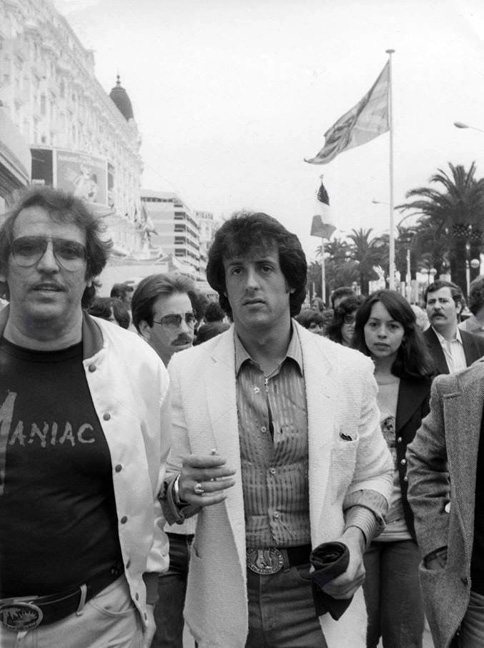 Joe Spinell (left) with a former adult film actor, in Cannes (1980)
Joe Spinell (left) with a former adult film actor, in Cannes (1980)
And you revived the same project twenty years later?
Twenty years later, out of nowhere, I was approached by a producer who had a “crazy, drunk investor” who’d turned down every project and pitch he’d offered. He asked if I had “a crazy project”. I showed him ‘Maniacts’ and the investor jumped on it. Three months later I had a script, and six months later I was directing the shoot in New Mexico.
What do you remember about the female lead of ‘Maniacts’, Kellie Waymire?
The script for ‘Maniacts’ generated a big buzz in Hollywood and we had a few ‘name’ actresses audition for the lead female part. We were on the verge of signing one of them when Kellie showed up the last day. I recognized her – from a creepy ‘X-Files’ episode that she did – but it was her audition that blew everyone else away. She added so much to the character I’d created that there was no other choice. And her contributions to the character and the film were invaluable, especially when the producers attempted to take over the production. She rejected every one of their attempts to undermine the film and me, making sure it got completed.
How did the film turn out?
The investor was so pleased with the result, he backed a trip to Cannes, where ‘Maniacts’ was shown out of competition. The producers had dozens of offers, one from the largest independent distributors in Europe, who said it was the best film she’d seen at Cannes in 15 years!
Anyway, I eventually discovered the whole idea was to fleece the investor and the insurance company, and I had screwed that all up for them… because we actually had a completed film!
When I got back to L.A., I accidentally discovered we had a deal with Redbox, one of the larger video distributors at the time, and had received a $2.2 million advance! Apparently, they received many offers after Cannes as well.
When I told the investor, he was shocked. He didn’t know about any of the Cannes offers either. Then an audit showed nearly half of the production monies had ‘disappeared’ during production. Finally, SAG sued and discovered that ‘Maniacts’ had made over $6.8 million through illegal overseas transactions. Everything became endlessly entangled in lawsuits. It was another one of those bitter legit experiences.
We were talking about a sequel when Kellie passed, certainly the most devastating loss of my career aside from Nick.
When you look back at your life and career, how do you view it?
If there’s any kind of recurring theme, I think it’s the women I was lucky enough to partner up with: always supportive, always contributing, and never dependent. True partners, no matter how briefly or long we were together.
This interview has been cathartic, which I’m thinking is good… even when it felt bad. Thanks!
*
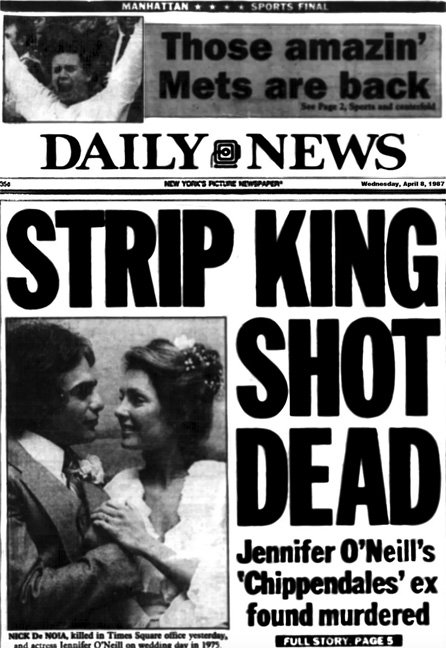
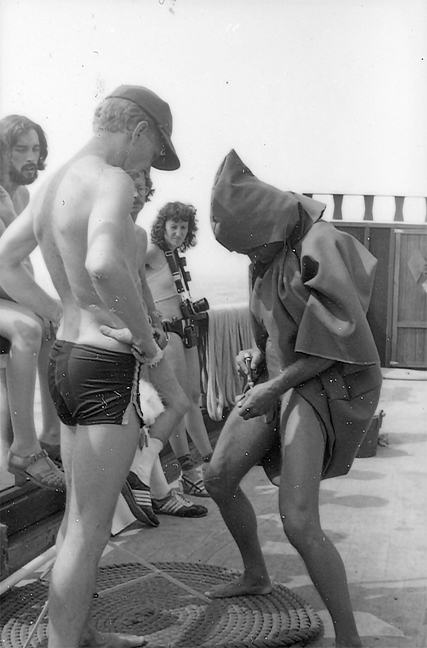
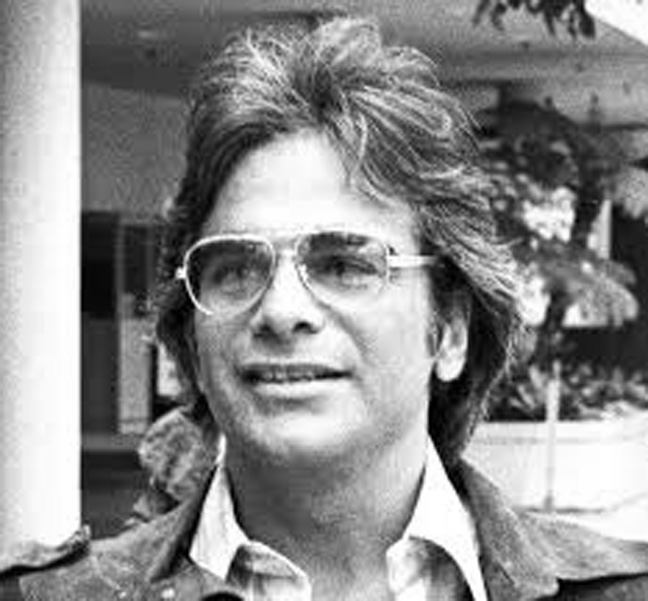
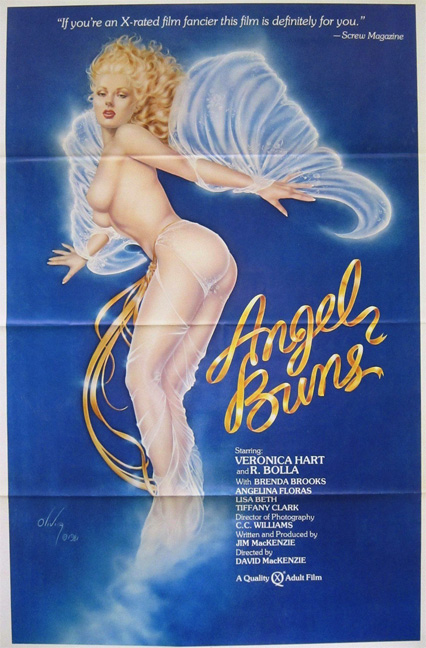
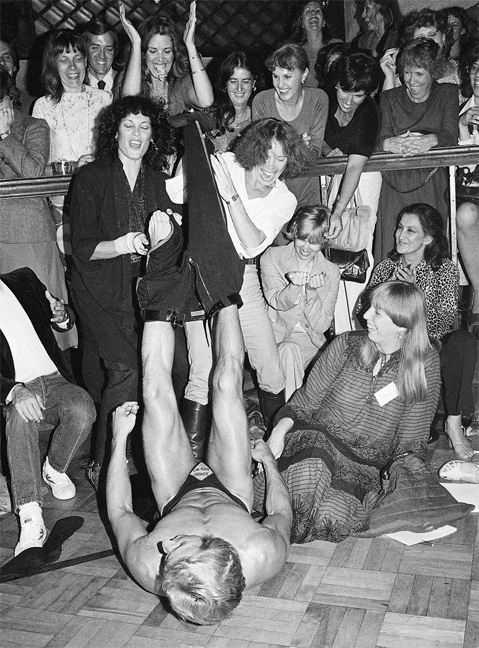
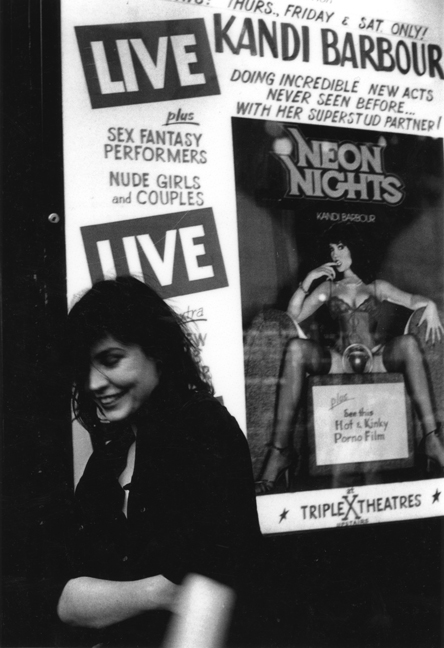
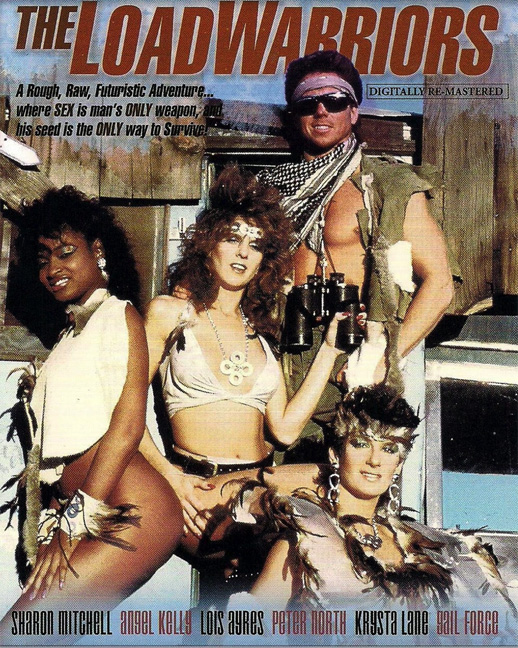
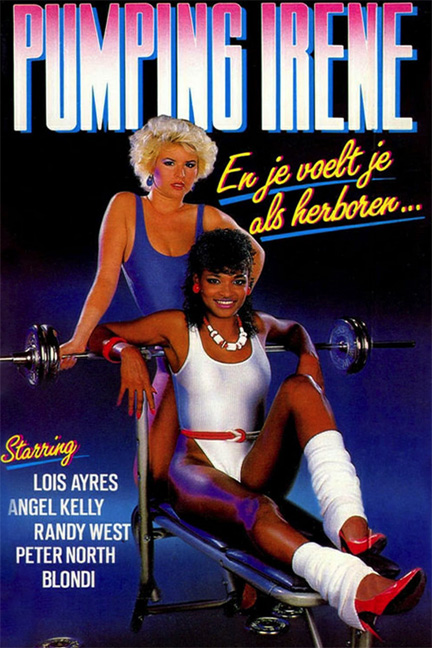
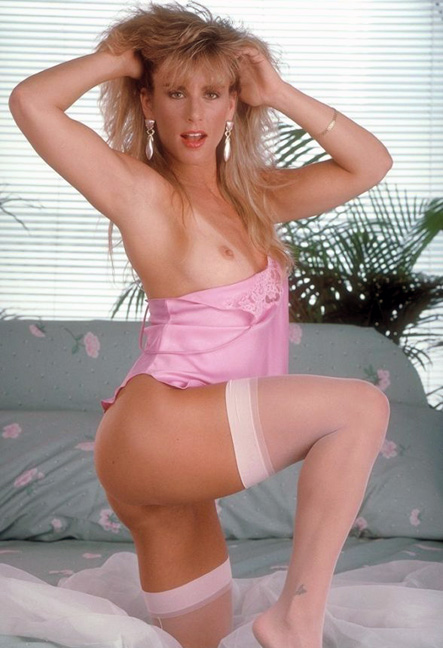
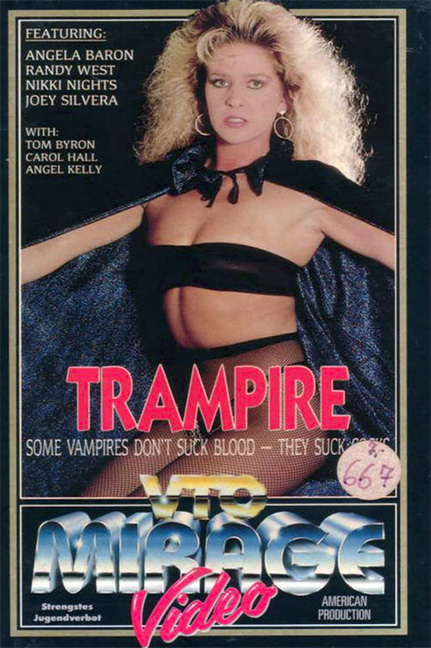

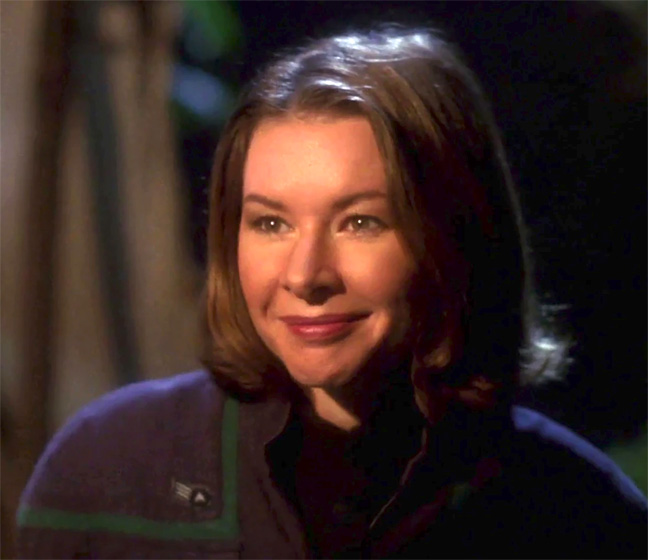
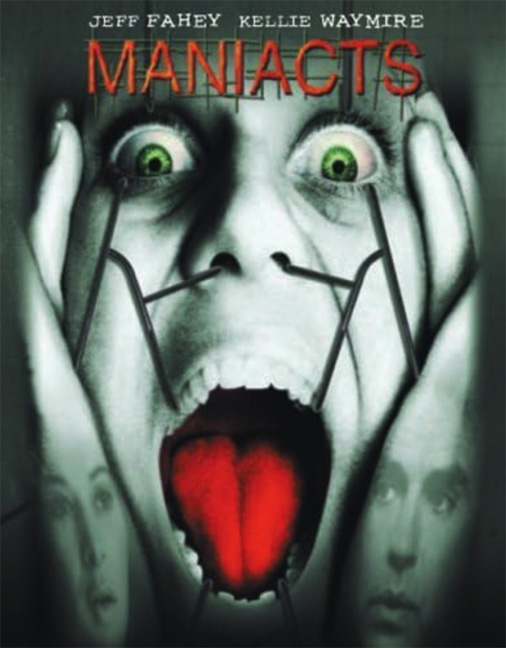
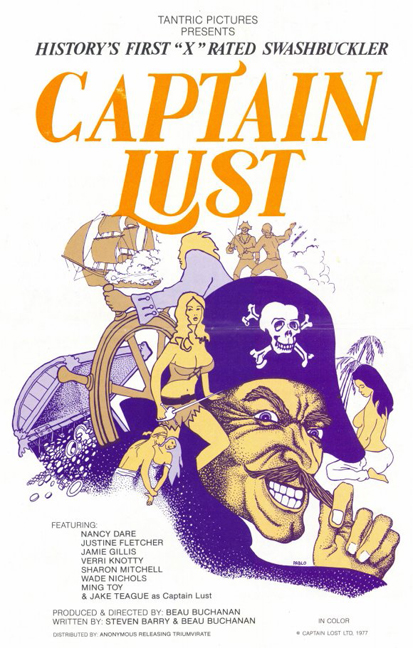
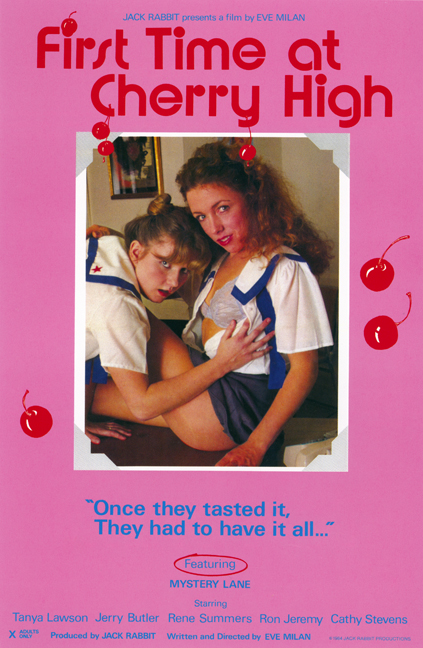
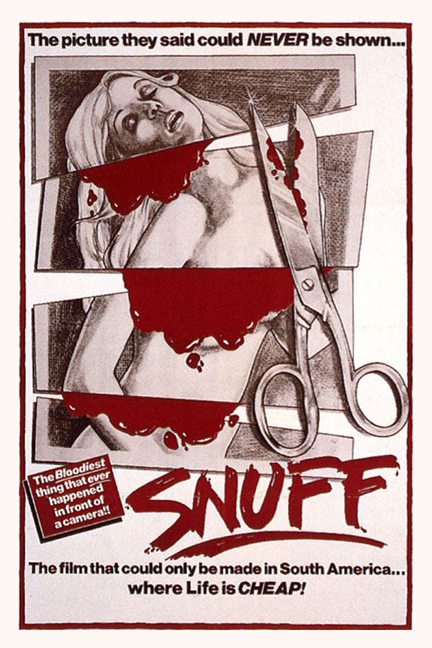

This story is astounding and an example of what the RReport do so well: a story about a little-known figure who – it turns out – is a talented and accomplished filmmaker, and has led a fascinating life. I loved this interview and could have read more!
GREAT INTERVIEW!!!!!
Awesome Article Keep Up Good Work
Mr Williams has had an amazing life – thanks to him for sharing it in such a compelling way.
Very enjoyable!
I’d heard rumors about Thundershine so it is very interesting to hear some of the detail. Wonder if any of it survives? Maybe David Buckley can tell his side of the story?
I’m suspecting the Bambi Woods footage from “Thundershine” was what they ended up piecing together to make Debbie Does Dallas 3.
I start off reading these pieces thinking that I’ll just consume a little at a time but soon feel compelled to finish the entirety of the presentation. Kandi Boubor seems to be a tragic story from that time. I wonder if it would be possible to put together a segment on her.
Awesome Sauce as Always! Now to hunt down Maniacts to watch. Stay Cool & Ciao.
Long time reader, infrequent commenter, but you had me at Lysa Thatcher with this one.
Great content as always, but please tell me that an interview with Lysa is forthcoming.
She was the most enduring fantasy- lithe, young but slightly older woman, for a boy on the verge of manhood.
The pulse still quickens.
BRILLIANT! Thanks.
And please, please, please how about a follow up with Lysa Thatcher…. she was my absolute favorite.
An amazing presence and such an intriguing life.
Love this.
It’s difficult to find fault with this…. such an intelligent, thoughtful interview.
And a special thank you to CC Williams himself – a truly varied and amazing life.
I wish my brain was bigger, as I’m running out of superlatives for your posts, RR!
Please accept ‘You Done Goodly’ for the time being?